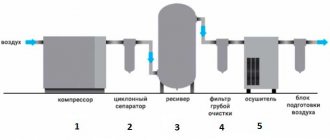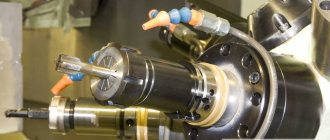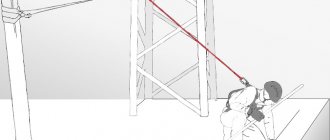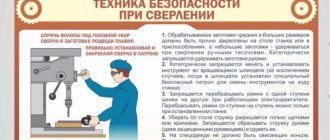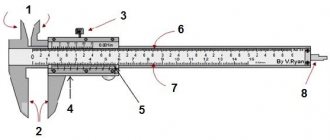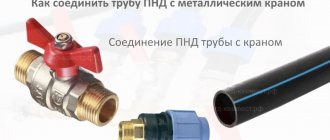How much does a Bosch hammer drill cost?
Prices for Bosch rotary hammers
| Hammer name | Price |
| Bosch GBH 2-28 F Professional 0611267600 | from 13,170 rub. |
| Bosch GBH 2-26 DFR Professional 0611254768 | from RUR 10,879 |
| Bosch GBH 240 Professional 0611272100 | from 7,550 rub. |
| Bosch GBH 180-LI Professional 0611911122 | from 15,308 rub. |
SDS-plus
The most common type of shanks. The shank diameter is 10 mm and it also fits into a 40 mm chuck. Unlike SDS, it has not two, but four grooves - two open and two closed. Open grooves are intended for guides, and closed ones are for fixing (locking) balls. In this case, the contact area of the shank with the chuck wedges is 75 square meters. mm. The main tool for drills with SDS-plus shanks are lightweight construction hammers. At the same time, the length of the drills ranges from 110 to 1000 millimeters, and the diameter from 4 to 26 millimeters.
August 17, 2015In this article, we summarized the available information about the equipment for rotary hammers, classified it by types of shanks, the method of working with the equipment (drilling, hammer drilling, chiselling) and gave general recommendations for its use.
Content:
1. Concept 2. Types of shanks – SDS – SDS-plus – SDS-max – SDS-top – SDS-quick – SDS-hex 3. Types of drills – spiral drills – auger drills – flat drills – breakout drills – drill with dust extraction 4. Chisels 5. Core bits 6. Drill adapters 7. Operating instructions
1. Concept
Equipment for rotary hammers is designed for processing hard materials (concrete, brick, natural or artificial stone) by impact, rotation, impact with rotation.
Rotation refers to the rotational movement of the equipment. It is used for drilling, impact drilling, hammer drilling, and core drilling technology.
By impact we mean the axial movement (reciprocating movement) of the equipment. Impact is used for impact drilling, hammer drilling and chiselling.
Equipment for rotary hammers can be classified by the type of shank and by the method of impact on the material being processed (drilling, including impact - drills and crowns; impact - chisels).
2. Types of shanks
The equipment for a hammer drill has a special shank, with the help of which the equipment is secured in the device for fastening the equipment of the hammer drill and which transmits the impact force to the working part of the equipment. The separation of the tool clamping device and the force transmission device allows the tool to be attached to the power tool without the use of additional tools (for example, a socket wrench for the chuck).
The most widespread are rotary hammers with chucks with the ability to quickly change tools using the SDS system developed by Bosch.
The literal translation from English (Special Direct System - special direct system) gives a general, but far from complete answer to this question. The German definition is much simpler and clearer - “INSERT-TURN-SIT” (Steck-Dreh-Sitzt). In Russian technical literature, SDS is accepted as a system for quickly changing equipment without the help of any devices.
In total, Bosch has developed 5 types of shank: SDS, SDS-plus, SDS-top, SDS-max, SDS-quick. However, two standards are most widespread and popular: SDS-plus - for light rotary hammers and SDS-max - for heavy ones, as they are the most popular in the construction market.
SDS
A shank with two grooves with a diameter of 10 mm, which is inserted 40 mm into the hammer drill chuck. This shank is 100% compatible with the SDS-plus shank.
SDS-plus
Today, almost 90% of rotary hammers are equipped with the SDS-plus system, developed by Bosch in 1975 based on the SDS system by adding two grooves. Already in 1998, more than 10 million hammer drills of this standard were sold.
The SDS-plus shank is a 10mm diameter shank that fits 40mm into the hammer drill chuck. The shank has four grooves (two open for guide wedges and two closed for fixation with locking balls). The contact area of the wedges is 75 mm2.
Drills with such a shank are used on light construction hammer drills; the minimum length of drills with such a shank is about 110 mm and the maximum is 1000 mm. The diameter of the drill is usually from 4 to 26 mm (the most common diameters are 6, 8, 10 and 12 mm).
To release the equipment, press or turn (depending on the design) a special ring on the chuck, which allows you to quickly and efficiently replace the equipment when using hammer drills.
SDS-max
The standard was introduced by Bosch in Cologne in 1989 and began production in 1990.
The SDS-max system is designed for use with heavy hammer drills. The operating principle is similar to the SDS-plus system. Only the diameters of the shanks and the number of grooves on them differ.
| 1. Ponytail diameter 2. Closed grooves for automatic locking 3. High degree of concentricity at 99 mm distance 4. 3 open grooves of 389 mm² for lossless energy transfer 5. 3 control wedges of the same area 6. Locking segments for secure holding 7. Drill tail, drill bits |
Designed for large diameter drills (usually more than 20 mm) used in heavy hammer drills. The diameter of the shank is 18 mm, the contact area of the wedges is 389 mm2, there are three open and two closed grooves, the shank is inserted at 90 mm.
SDS-top
Introduced by Bosch in 1999 to solve the problem of failure of SDS-plus shanks when drilling holes over 16 mm.
This less common type of shank for medium-sized hammer drills is a reinforced version of the SDS-plus shank. The drill shanks of this standard have two closed and two open grooves. The diameter of the shank is 14 mm, it is inserted into the chuck at 70 mm, the contact area of the wedges is 212 mm2. The diameter of the drill is usually from 16 to 25 mm.
To operate SDS-top drills, four-kilogram class hammer drills with a replaceable chuck are used (the SDS-plus chuck is replaced by an SDS-top chuck).
SDS-quick
This type of drill shanks was introduced in 2008 by Bosch, in which protrusions are used instead of grooves. This shank holder can also accommodate bits and drills with a 1/4" hex shank.
At the beginning of 2010, it was used only for the Bosch Uneo rotary hammer.
SDS-hex
SDS-hex is a hex clamp and is only used on very high impact hammers.
3. Types of drills
A hammer drill is the main type of hammer drill equipment designed for drilling holes in hard materials (concrete, brick, natural or artificial stone).
In its design, the drill is similar to a drill - it also has a shank and a spiral for removing waste from the drilling zone (there are options for the location of the dust removal channel inside the drill). However, hammer drills are more durable due to the higher energy required per hammer impact, and are usually made from higher quality materials.
In addition, the spiral flutes of the drill do not have a cutting edge, but serve to remove small particles from the hole being drilled.
The cutting part of the drill can have a different number of cutting edges and different sharpening. For better strength, the cutting edge is made slightly rounded, and not sharp, like a drill. Drilling of the drill is accompanied by short blows with high frequency. Therefore, drills are not used to drill into fragile materials. They are mainly used when working with concrete.
An important factor influencing the performance of a rotary hammer drill is the shape of the cutting surface.
If it is “conservative”, i.e. a straight surface or with a slight protrusion - this creates additional stress on the hammer drill, on the operator’s hands and the drill will become dull faster.
Today, the best option is a drill with a centering spike, and in general the shape of the cutting edges is good, which has the property of self-sharpening.
The shape of the drill head directly affects the degree of delamination in concrete or brick; accordingly, with a centering spike it will create a hole in which the dowel will “sit” more firmly. It is easier to work with such drills, since they stay more evenly in the channel and do not tend to jump to the side.
The number of working edges on a drill varies from two to four. For work with reinforced concrete, drills with one solid solder and two auxiliary plates are used.
In addition to classification by the number of cutting edges, drills can be divided into subgroups based on the structure of the slag removal spiral.
The type of cutting determines how effective the removal of sludge from the hole will be.
If the angle of inclination of the grooves is small, the drill is intended primarily for long-term work with low feed rates. The drilling speed is reduced, but the load on the hammer drill when using such an attachment is minimal.
As the angle of inclination of the grooves increases, productivity increases, along with the load on the tool. You should take breaks to allow the hammer to cool down. Another disadvantage of this equipment is that it reduces the strength of the drill body
Spiral drills
Spiral drills are used for drilling deep holes when dismantling thick walls.
Auger drills
Also designed for drilling deep holes. It is distinguished by its design features, thanks to which slag removal occurs very quickly. The big advantage of the screw type is that it does not require sharpening.
Auger drills are the most effective for drilling deep holes.
Flat drills
Such drills are used for drilling a large number of holes of small depth. The downside is poor cutting removal during drilling, and extra effort is required when working with them. But if we compare them with spiral ones, then their resource is much higher.
Breakthrough (opening) drills
Breakthrough drill SDS-max for making openings (drill-opening) are designed for drilling holes of large diameters: from 45 to 80 mm in concrete, masonry and sand-lime brick, which is ideal for laying cables and pipelines. The drilling head of the drill hole has a special bell-shaped shape with asymmetrically located shanks and a central cutting edge made of carbide. The large feed helix and long tapered shank ensure efficient operation, while the centering drill ensures precise drilling.
Hole-through drills have a very short flute and therefore are less likely to jam when drilling deep through holes. Reduced friction in the drilled hole means the job can be completed faster. Since removal of drilling dust is difficult due to the short flute, this drill, as its name suggests, is specifically designed for making through holes rather than blind holes. Standard drill diameters range from 45 to 80 mm with depths from 500 to 850 mm.
The unique design of the cutter head provides it with significant advantages over conventional tools!
– precise marking;
– rapid advancement in the material due to chisel-shaped hard alloy plates;
– additional teeth are used to drill the entire hole; there is no need to gouge out the contents after drilling;
– uniform removal of crumbs thanks to wide spiral turns;
– long service life;
– low weight and low vibration;
– monolithic structure transfers impact energy without loss;
- a smooth, round hole.
Suitable for rotary hammers weighing over 5 kg with SDS-max connector.
Drill with dust removal
In drills with hollow shank dust extraction, drilling dust is removed from the cutting edge area using an external dust removal system and an additional suction head. Dust extraction drills are not equipped with a flute and the SDS-plus range includes drills with diameters from 8 to 24 mm.
4. Chisels
Chisels open the structure of the stone using impact and then destroy the stone using wedging action. The shape and quality of work largely depend on the user's handling of the tool. A distinction needs to be made between mortising chisels, which are used to break holes, chipping chisels, which are used to finish the edges of a part, and demolition chisels, which are used to break up masonry parts of a building. There are chisels for almost every application. Different types of chisels are characterized by their typical application, shape and design. This explains the many different types and variations of chisels. In addition to chisels, there are also impact tools for specific purposes, such as tamping plates and splitting tools.
A. Pointed chisel. Pointed chisels are recommended for use in hard materials such as concrete. Here, all impact energy is concentrated at one point and creates the highest material removal performance using wedging action. In this case, sharpening means chipping, breaking, or breaking off.
B. Flat chisel . Flat chisels are primarily used for softer types of stone such as brick, soft sand-lime brick, etc. Thanks to the presence of a cutting edge on the chisel, the impact energy is more effectively distributed in these materials. This chisel is also used for “contouring,” that is, marking the stone material that will be removed.
C. Spade chisel. Wide flat chisels are used to break out and loosen soil, screed and asphalt, or to knock plaster off walls or masonry. The wide cross-cutting edge with a length of 50 to 110 mm enables highly efficient chiselling and chipping in lightweight building materials such as pumice blocks, hollow bricks or plaster. A spade chisel of appropriate width depending on the hardness of the mortar can also be used to remove tiles.
D. Semicircular (channel) chisels. These types of half-round chisels are used to cut grooves or slots for gas, water and electrical lines in a variety of materials (exceptions: granite and marble). Half-round chisels with straight blades are best used for softer building materials. The slight bend makes it easier for the top of the half-round chisel to maintain a consistent cutting depth.
E. Cement chisel. This type of chisel is designed to remove mortar from the joints between bricks.
F. Serrated chisel. Serrated chisels are used in the same way as flat chisels. Their advantage is a wide cutting edge with a peaked chisel effect. The sharp tips penetrate the building material individually and provide good material removal performance. This technique is recommended for cleaning seams, knocking down tiles, floor tiles and stone slabs, followed by cleaning or roughing surfaces.
G. Spade chisels. Spade chisels are used to loosen and penetrate soil, earth and clay.
H. Tamping plates. Tamper plates are used for small compaction jobs (sand, gravel, rammed concrete or heavy soils). The tamper plate is secured using a conical tooling fixture. The maximum possible compaction depth is achieved using a small tamping plate.
I. Impact plate. Impact plates are used to roughen or level concrete, artificial or natural stone surfaces. The surface structure depends on the number of teeth and the duration of processing, as well as on the strength of individual impact influences. The fender plate is secured using a conical tool holder. Since only a small layer of the stone surface is removed, chipping plates can be used on hard sub-layers to remove layers of paint containing rubber.
J. Splitting Tools. Splitting tools are used to separate massive stones after appropriate holes have been drilled into them with a hammer drill.
K. Tile chisel . This chisel is designed for removing tiles (with an ergonomically offset transverse cutting edge).
L. Chisel with a sharp end. This chisel is designed for removing mortar from masonry joints, removing intact bricks from walls, knocking down tiles, removing plaster (with tungsten carbide teeth).
M. Flat chisel . This chisel is designed for general carpentry work, quickly removing soft wood such as old window frames.
5. Crowns
Designed for drilling large diameter holes. If the drill forms a channel in the concrete, completely gouging out the “rock,” then the crown operates on the principle of circular drilling. It is buried in the wall, leaving a core inside, which is removed separately. It is in this way that nests for socket boxes are most often prepared. The crown destroys the material with carbide teeth, while precise immersion is ensured by a centering drill.
The bits are available both for SDS-Plus rotary hammers (you can drill holes with a diameter of 25 to 110 mm), and in the version with an SDS-Max shank, with a diameter of 45-150 mm. Please note that contact with reinforcement is contraindicated for crowns - the equipment may be left without teeth.
Externally, they represent a hollow cylinder with carbide teeth, mounted on a rod with an SDS-Plus or SDS-Max shank. The pointed tip of the rod protrudes slightly above the cutting edge of the crown, positioning the equipment correctly. Crowns are needed to make relatively large holes (up to 150 mm). Most often this is through drilling of walls for pipes.
The operation of a drill bit is as follows: the segments on the drill bits create an annular gap with a diameter equal to the diameter of the drill bit, due to the effect of pressure and feed force, the annular gap is ground deep in the material. In porous materials, the generated heat is removed by pumping out air (dust); in the case of solid materials, by supplying water for cooling and washing. Basically, a distinction needs to be made between drill bits for dry drilling and drill bits for wet drilling. Since dry drilling is primarily used for drilling relatively soft materials (masonry), the segment dimensions of dry drill bits are different from the segment sizes of wet drill bits, which are used for harder materials (concrete).
6. Drill adapters
Universal hammer drills, capable of both drilling and chiselling, are often equipped with a conventional drill chuck - a key-clamped chuck or a keyless chuck. They can be put on through an adapter with an SDS shank, but in this case the chuck runout will increase and the size of the tool will increase, which will certainly interfere with accurate and productive work.
There is another option, in which the barrel has a different design - its tip is adapted to the drill chuck. In this case, remove the SDS-plus chuck and install, for example, a quick-release chuck. In this case, the transfer of shock to the cartridge is excluded.
7. Operating instructions
Before installing the working tool, you should make sure that the tool is in good working order, make sure that there are no chips or cracks on it, and check that there are no breaks in the rubber boot.
Any noticeable deformation of the drill shank or hammer head makes it unsuitable for use. Using such equipment can lead to jamming in the SDS chuck, which will lead to the replacement of the hammer drill spindle.
Before installing the equipment, it is necessary to clean the rubber boot of the cartridge from dust. After this, you need to apply a specialized lubricant to the splines of the equipment and insert it into the hammer drill chuck.
Lubricant for the drill will extend the life of both the hammer drill chuck and the drill itself.
You need to press until you hear a click. Pull the drill towards you; if it does not come out, the installation was successful. To replace the drill, you need to press the chuck ring along the axis towards the tool and remove the drill.
During operation, the drill heats up; change equipment only with gloves to avoid burns.
To increase the service life and prevent accelerated wear, the tool, like the equipment, must always be kept clean, removing excess lubricant and dust adhering to it, and also apply new lubricant.
When working with drills with a length of more than 460 mm, preliminary drilling with a drill of the same diameter with a length of about 150 mm is mandatory. If the drill is 600-1000 mm long, then it is advisable to carry out drilling in 3 stages.
The non-impact drilling mode must be used under certain technical conditions. When operating only in rotation mode, the hammer drill must be switched to rotation mode with impact and rotated at idle speed to distribute the lubricant inside the tool.
Instrent
SDS-top
One of the less common types of shanks, which is intended for medium-sized hammer drills. Shank diameter - 14 mm. There are 4 grooves: two open and 2 closed. The contact area with the wedges is 212 square meters. mm.
Drills with SDS-plus shanks often failed when drilling holes larger than 16 millimeters, and in 1999 Bosch introduced the SDS-top standard. For SDS-top drills, four-kilogram hammer drills with a replaceable chuck are used.
Prerequisites: From Material Safety Data Sheet (MSDS) to Safety Data Sheet (SDS)
Safety Data Sheets (SDS) were originally known as Material Safety Data Sheets (MSDS) until 2012, when the Globally Harmonized System of Classification and Labeling of Chemicals was agreed upon by the Occupational Safety and Health Administration (OSHA) Hazard Communication Standards (HCS) Division. . (GHS) to rename and standardize the MSDS process.
Before 2012, regulations regarding the procedure and content of material safety data sheets varied from place to place. The GHS system is used throughout the European Union, so this change has been introduced for consistency across all regions.
In addition to abandoning the letter M - changing the name to Safety Data Sheets - the format of the reports was also regulated. The new MSDS guidelines included a standardized, user-friendly format of 16 sections. Companies have been given about three years to complete the transition from Material Safety Data Sheets to Material Safety Data Sheets.
For more information on how Chemwatch extracts data from SDS, read SDS Are Useless!
What does a drill do?
Drill
- a cutting tool designed for drilling holes in various materials.
Drills
can also be used for drilling, that is, enlarging existing, pre-drilled holes, and drilling, that is, obtaining through recesses.
Interesting materials:
How to create a Facebook account without a phone number? How to create an album in Odnoklassniki from your phone? How to create a chat in Telegram on your phone? How to create a blacklist on a Samsung phone? How to create two WhatsApp on one phone? How to create an FTP server on your phone? How to create a group in Gmail on your phone? How to create an application shortcut on your phone? How to create an icon on your phone? How to create music on your phone?
What kind of shank do drills with a diameter of over 12 mm have?
Drills with a diameter over 12 mm
made of high-speed steel must be welded.
The shank
of the welded
drill
must be made of steel grade 45 according to GOST 1050-88 or grade 40X according to GOST 4543-71. (Changed edition, Rev.
Interesting materials:
What is better: floor-mounted air conditioner or split system? What is better Npb or ppu? What is better wallpaper or color? What is better OSB or plywood for the ceiling? What is better pox or csp? Which is better, parquet boards or laminate reviews? What is better polystyrene foam or Penoplex reviews? Which is better, polystyrene foam or mineral board? What is better Sand block or gas block? Which is better, film or glass for a smartphone?
Which concrete drills are better?
General quality of concrete
depends on the quality of their tip and the number of cutting edges - 2,3,4.
The most effective will be a drill
with four cutting edges made of carbide.
Less durable drills
have no more than 2 edges. Reinforced concrete must be hammer drilled using a standard or impact drill.
Interesting materials:
What does Strawberry mean in WhatsApp? What does the Delete button mean? What do buttons mean in a car? What does the security code change in WhatsApp mean? What does error code 505 mean? What does it mean when a cat purrs? What does it mean when a user is busy? What does it mean when you wake up at the same time? What does the number of views in a contact mean? What does the bell mean on YouTube?
Collet type chucks
Not all rotary hammers belong to the modern SDS system. Today you can find tools with collet-type clamps, among which it should be noted:
- Key type cartridges. Such a fixing part allows the installation of a shank with a cylindrical rear part. Special slotted keys drive the cams, which ensures reliable fixation of the nozzle. Among the disadvantages, it should be noted the complexity and time consumption of installing and removing the working part.
- Among the collet-type models, quick-release chucks are also known. The principle of operation and design of such a part are similar to the clamps on screwdrivers.
Both types of cartridges should not be used in impact hammer drills, since the parts will quickly fail.
What happens if you don't have an SDS management system?
If your company doesn't have an SDS management system, you run the risk of not having adequate SDS or having outdated SDS. In Australia this is considered a health and safety breach. You are required by law to have correct and up-to-date safety data sheets for any hazardous materials your company uses. Similarly, in the United States, it is a requirement set by OSHA that workplaces must have a readily available and accessible MSDS for employees working with hazardous chemicals.
Hazardous chemicals that will require safety data sheets.
How do chucks for hammer drills work?
To effectively use different hammer drill bits, you need to ensure that they are securely attached. A special cartridge is used for this. Its first models began to be developed back in the 30s of the last century, when hammer drills appeared on the market, the mass production of which was mastered by the world famous company Bosch.
Such a manual device as a hammer drill was almost immediately appreciated by consumers, since it can be used to combine drilling with pulse chiselling, which significantly increases the efficiency of the processing performed. The main drawback of the first models of rotary hammers was precisely due to the fact that the weakest link in their design was the cartridge, which quickly became unusable under the influence of shock loads.
As a result of long-term development, manufacturers of hammer drills and chucks have come to the following conclusion: the simpler the design of the clamping device, the more reliable it is in operation.
Externally, the hammer chuck is a completely closed clamping device
As a result, three main types of cartridges for rotary hammers were created, which in turn are divided into subtypes.
There are chucks in which the working attachment is fixed using a special key that activates cams that reliably clamp the shank of the tool being used. The most significant advantage of this type of chucks is that they provide reliable fastening of the tool used in conjunction with the hammer drill. Meanwhile, to replace the working tool in such a chuck for a hammer drill, you will need to spend significantly more time than when using other types of clamping devices.
Main types of hammer drill chucks
The working attachment of the hammer drill can also be fixed on it using a quick-release chuck (KLC), which is activated only by the force created by the operator’s hands. Depending on the design, cartridges of this type can be single- or double-clutch, the operating principles of which also differ.
Single-socket chucks are easier to use, but they can only be used in conjunction with drills that have the ability to automatically lock the working shaft. To activate such a cartridge, the effort of one hand is sufficient. To use a double clutch clamp, you need to hold the rear clutch with one hand and rotate the front clutch with the other.
Problems to be solved
Storage as a service
To organize storage as a service, the storage system must provide basic functions:
- isolation of service users (companies/divisions), their internal users (individual business users) and applications from each other;
- isolation of loads between users;
- separating network connections from overlapping address spaces;
- scaling storage without changing application configuration.
You will have to look for similar solutions among classic storage systems. In SDS, these functions are usually included initially, or they are easily implemented.
Hyperconverged systems
If the software solution occupies more than one server (with or without virtualization) and requires impressive disk capacities, software-defined storage allows you to reduce the total cost of the system. In addition, using SDS will allow you to scale the application and storage by adding (removing) nodes with the required amount of computing or disk resources.
Cloud storage for cloud applications
A cloud application is mobile-first and scalable. The storage for it must be appropriate - accessible to the application from any point where it is launched, scalable, without obvious bottlenecks. A striking example is containers. All data of a containerized application is located in external storage, which is either accessible to the application over the network or dynamically connected to the container when it starts. Modern software-defined storage systems successfully cope with such tasks, since, in fact, they were created for them.
Petabyte-scale archival/cold storage
A couple of petabytes of disk array for cold data storage? It will turn out “golden” and will only warm the air. And in a few years, the cost of its support will become “platinum”, and a project will be opened to migrate data to a new “golden” array. A file system of this size will be scanned for days after a server failure, and the storage will be unavailable.
Object software-defined storage at such volumes is much cheaper than classic storage systems. With the help of Erasure Coding (12+6, for example), the necessary fault tolerance is achieved (data integrity rate is 99.9999999999999%). And when this data is distributed among three or more data centers, shutting down one of them will not make the storage system unavailable. At the same time, there are no disadvantages of classical replication in the form of multiple duplication of disk space.
Storage for IBS
SRC manufacturers have already included support for object storage in their products. Both Veritas NetBackup and CommVault Simpana have learned to work with storage using both the S3 protocol and special protocols for individual object storages.
SDS technologies are ideally suited for creating cold/archival data storage systems, such as archives of media content, recordings of conversations in call centers, recordings of video surveillance systems, email archives, etc. In a word, the use of software-defined storage systems is optimal when it comes to long-term storage of large volumes of information that are not subject to constant operational processing, but must be easily accessible when necessary.
Separately, it is worth noting that the use of software-defined storage is possible even for Oracle ASM with sub-millisecond access. At our company’s stand, we tested a software-defined storage configuration in which the SSD drives of each server were provided to the other servers in the form of block devices over a dedicated network. On the tested drives there was no difference between network and local access to the SSD for the application. That is, for Oracle ASM (and Oracle RAC, in particular) with modern volumes of SSD drives, it is not necessary to buy a shared disk array. It is enough to make the internal disks of the servers accessible to other servers in the cluster over the network.
Software-defined storage systems still seem exotic, but now they allow solving a large pool of tasks - from archival storage to high-speed processing - for less money or comparable to using classic disk arrays. At the same time, standard storage systems still struggle to extend beyond the data center, while SDS is already scaling to the size of the Internet.
Chemwatch is here to help.
SDS management
Chemwatch offers a full range of SDS management solutions to suit all requirements. Contact us at for more information on how our Hiking Backpack, GoldFFX and Chemeritus packs can help you.
Backpack allows you to create SDS folders according to your needs and search for the SDS you need in our Collection of over 50 million. To access 50 free chemicals, click here for a free trial of Backpack (Backpack Ltd).
Development of safety data sheets
If you require creating your own SDS, Chemwatch also offers GoSDS and AuthorITe.
GoSDS is a quick and easy way to create safety data sheets (SDS). Pay-as-you-go authoring system allows you to create your own MSDS in 7 simple steps. Built by professional MSDS writers and GHS regulatory experts, the platform is GHS compliant and contains over 200,000 fully classified chemicals available in the pipeline, while also giving you access to the most up-to-date regulatory requirements. To get a free trial of GoSDS, click here.
Recommendations for choosing a server for software-defined storage systems
To operate software-defined storage, you will need a high-performance server:
- multi-core;
- multiprocessor;
- with support for a large number of disks and RAM;
- with high density and fast network interfaces.
Specific equipment is selected according to the requirements of the software that will use these resources. We, in turn, recommend paying attention to such servers as HPE ProLiant DL380 Gen10, Dell EMC PowerEdge R740, Fujitsu 2540 M5. We have used these products for SDS deployments before and we can confidently recommend them for several reasons. They support flexible horizontal scaling, so there will be no problems when expanding your business. All of these are powerful and efficient solutions with high data processing speed and the ability to protect them, compact and universal (suitable for solving diverse problems).

